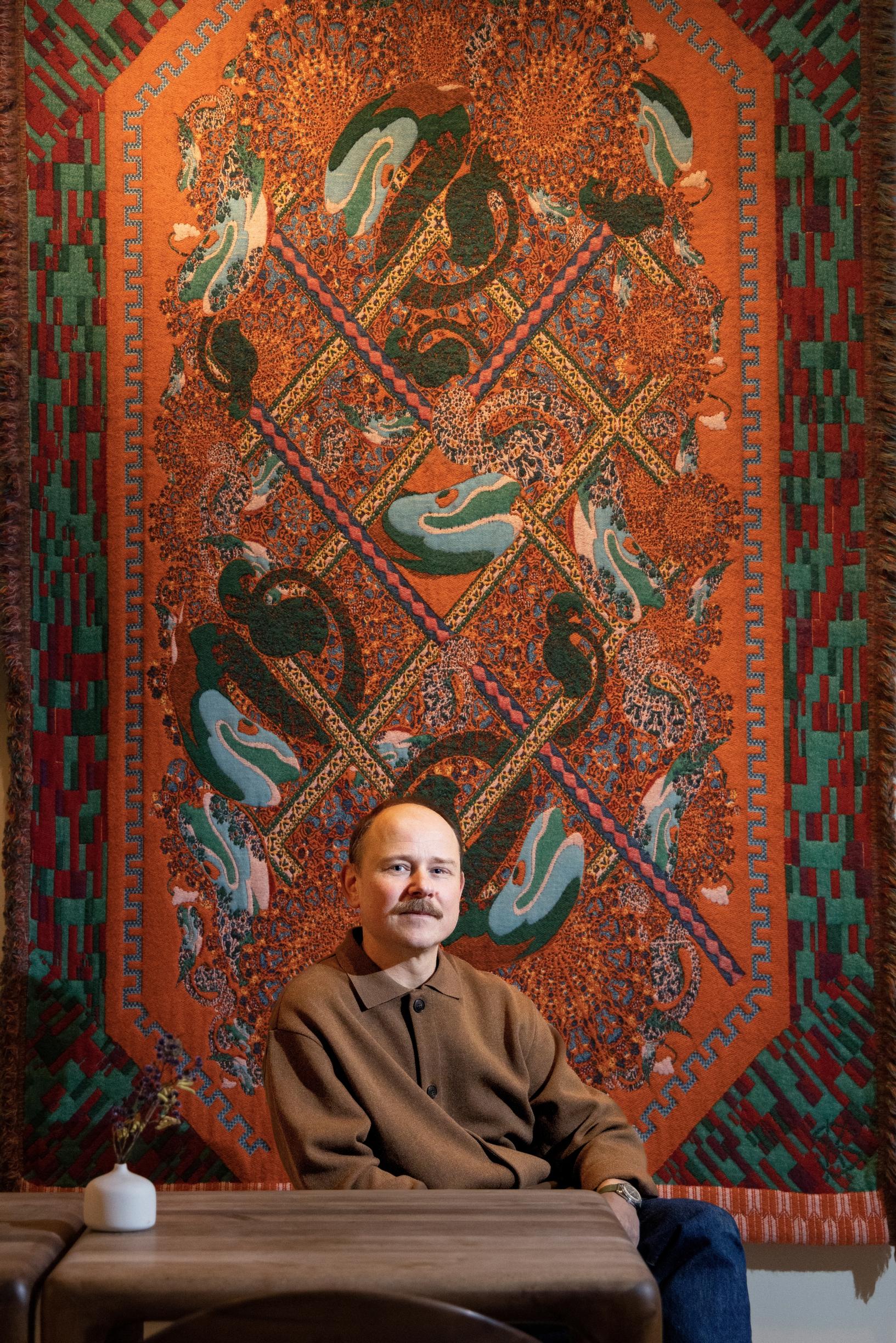
The beauty of migraines is displayed in Kustaa Saksi’s textile artworks: “The world of visions has become part of me”
The woven art of Amsterdam-based Finn Kustaa Saksi draws on the microscopic side of nature and on visions that emerge in moments between sleep and wakefulness, as well as on his migraines.
Tilburg, the Netherlands, September 2011. This place and time marked a major turning point in Kustaa Saksi’s career.
Already successful as an illustrator, Saksi visited the Textile Museum in Tilburg to see an exhibition. He also decided to stop by its textile lab, where he examined weaving machines and met skilled specialists, along with a vast library of materials. He was looking for something new as he had grown weary of graphic design and commission work.
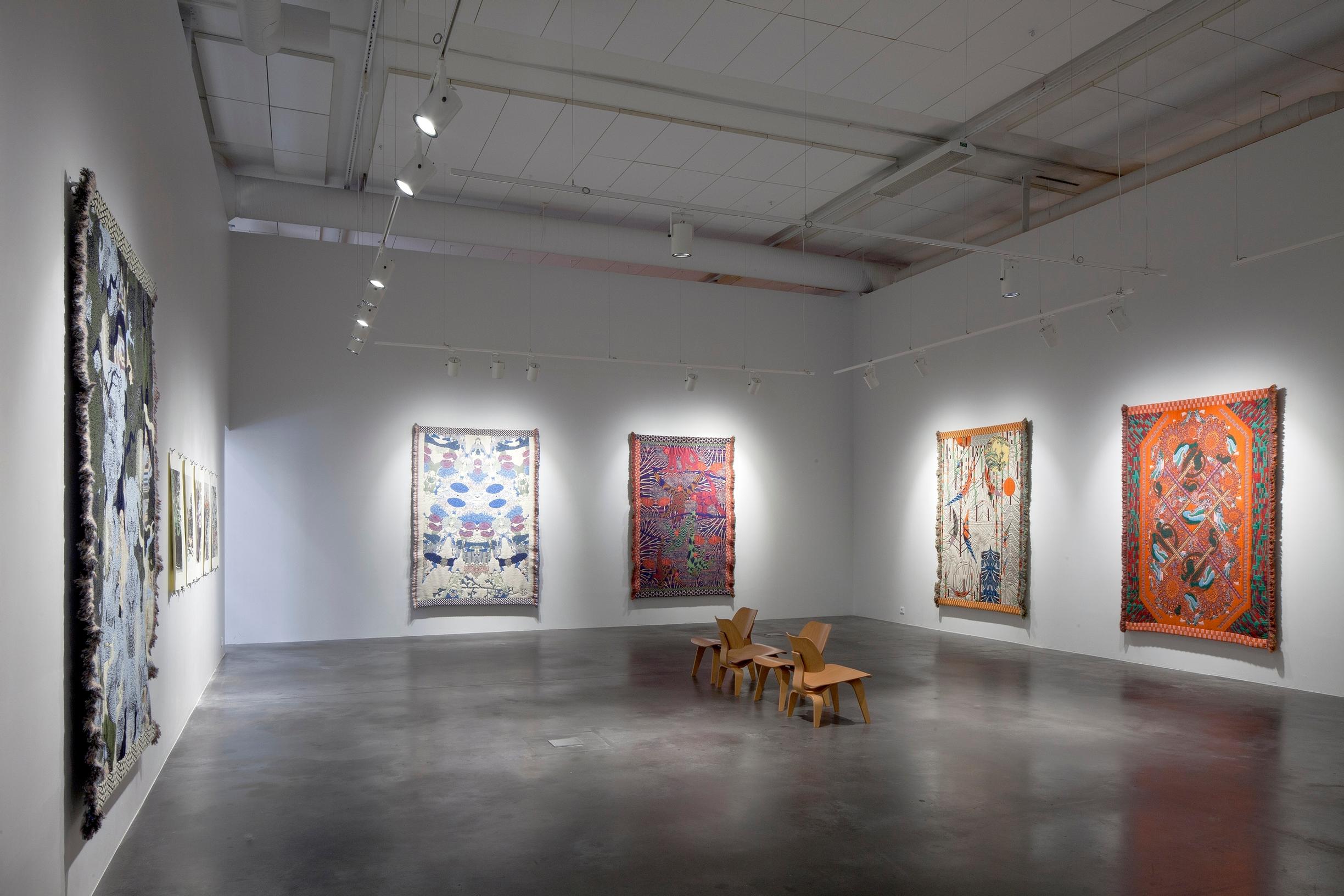
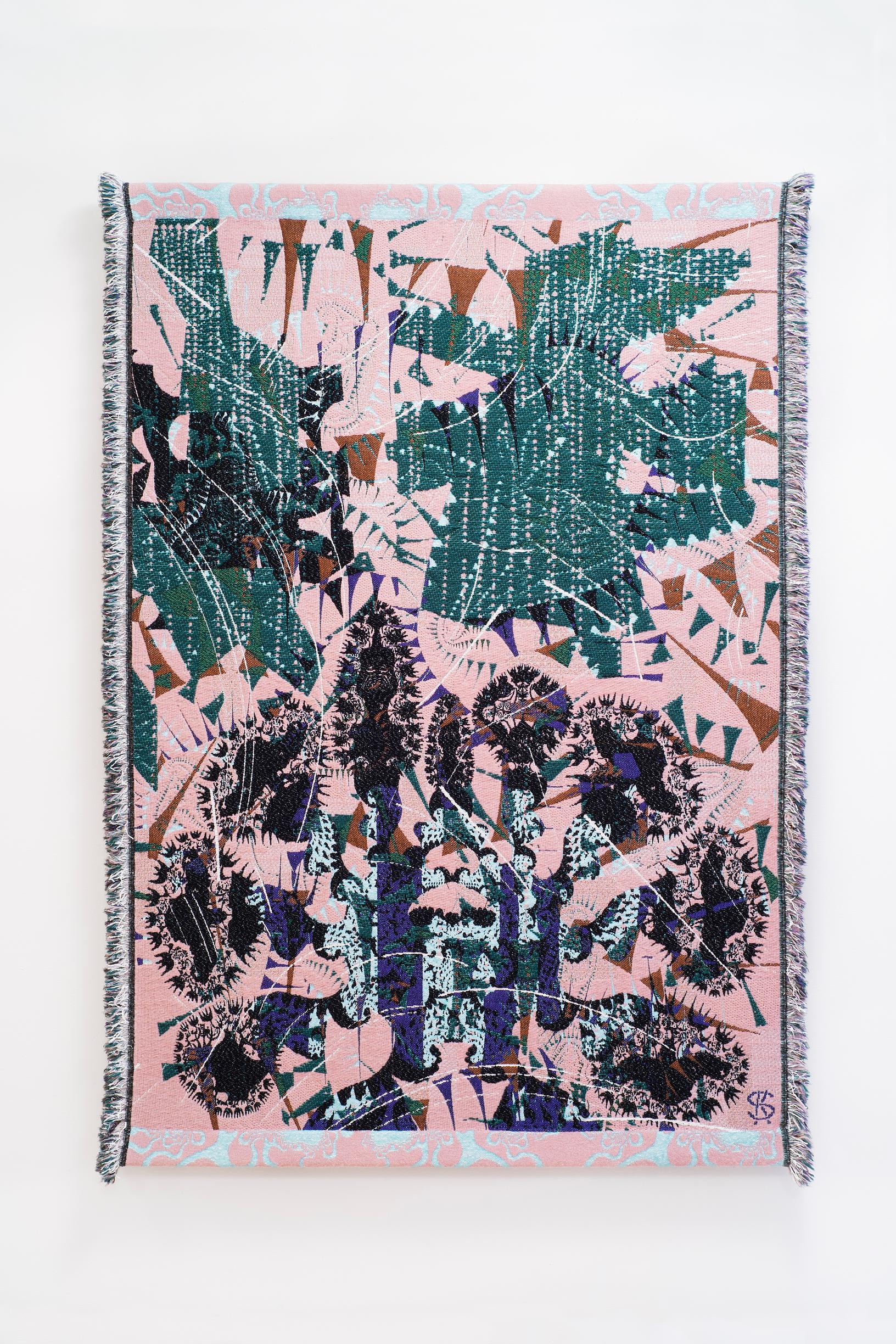
Saksi had his first encounter with textiles about five years earlier, when he created patterns for an Italian knitwear producer. Seeing them woven made him realize just how wonderful wool can be.
That memory came back to him. He decided to contact the textile lab, which was mostly staffed by textile professionals but also accepted artists from other fields.
“I was basically a beginner when it came to weaving,” Saksi recalls of that early period.
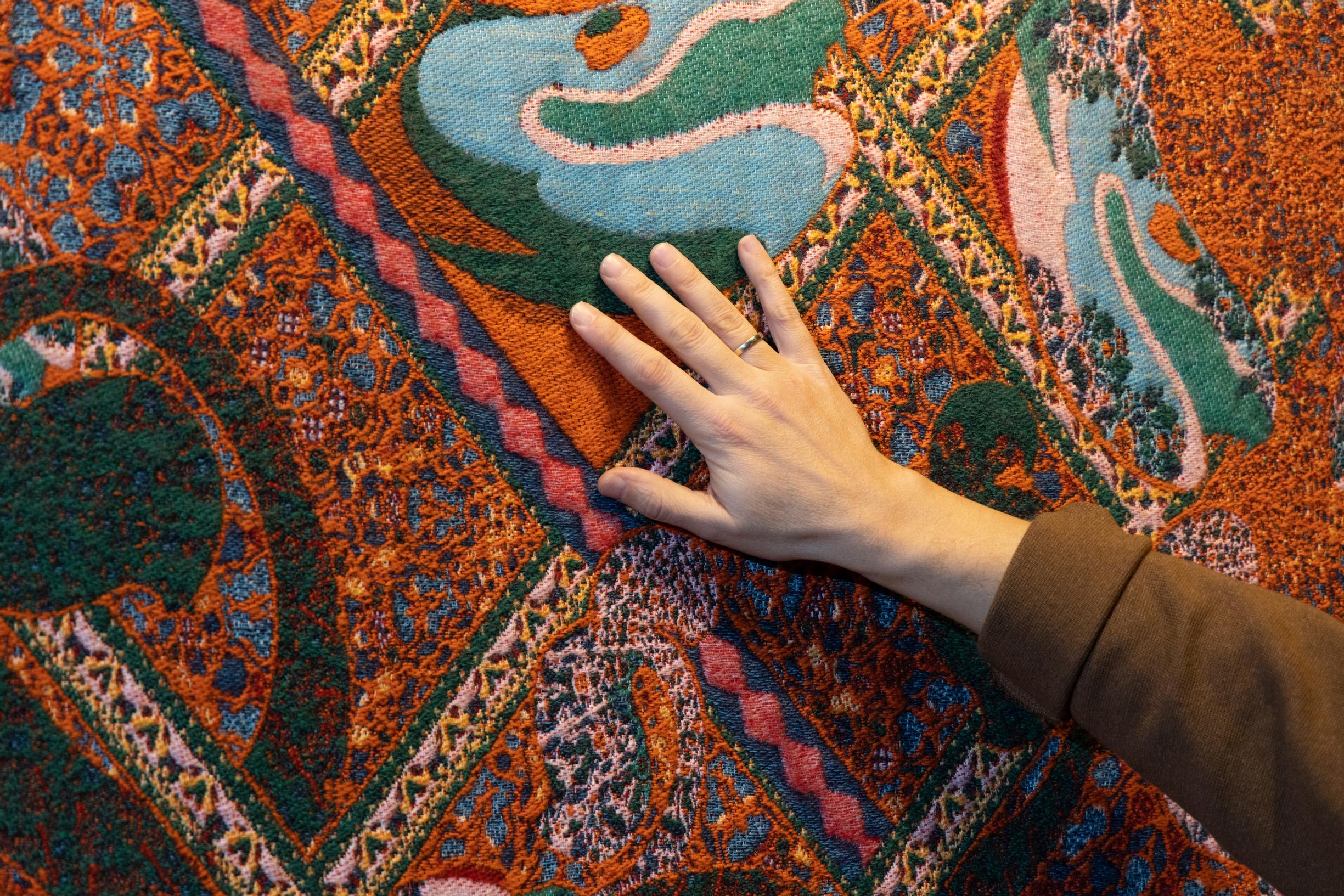
Weaving swept him away
When Kustaa Saksi showed his first design at the textile lab, he was told it was too complicated to complete. Still, they decided to give it a try, and the weaving started to flow.
“Even for them, something new opened up because I could ask the ‘dumb’ questions. Sometimes not knowing the technique too well can help, as long as you have a vision.”
Saksi held his first textile art exhibition at Korjaamo Galleria in Helsinki in 2013.
“I never planned on a career as a textile artist, but the structure and three-dimensionality of textiles swept me away, and I ended up working on paper far less. My enthusiasm shows no signs of slowing down.”
Saksi still works at the textile lab in Tilburg. He is supported by a team of about five people, including a materials specialist who orders supplies and ensures responsibility. Saksi appreciates the collaboration, since illustrating can sometimes be lonely.
Weaving also involves technical challenges: there’s a set number of threads, and they must produce a range of colors and patterns.
“Suddenly, there were specific constraints, which only made me more interested. I was clearly seeking a challenge.”
“Something new opened up because I could ask the ‘dumb’ questions. Sometimes it helps not to understand the technique, as long as you have a vision.”
Textile art has traditionally been seen as feminine. Schools used to have girls focus on textiles and boys on woodwork. Saksi says it’s changing. For him, weaving is simply a technique that suits his style of expression.
“I could create my designs by painting, printing, or carving on any material. But textiles allow me to get the texture I want, and that has opened up a lot of room for experimentation.”
Saksi himself doesn’t know how to weave.
“I’m a bit clumsy with my hands. I can express myself better through machine weaving, where I can control every detail.”
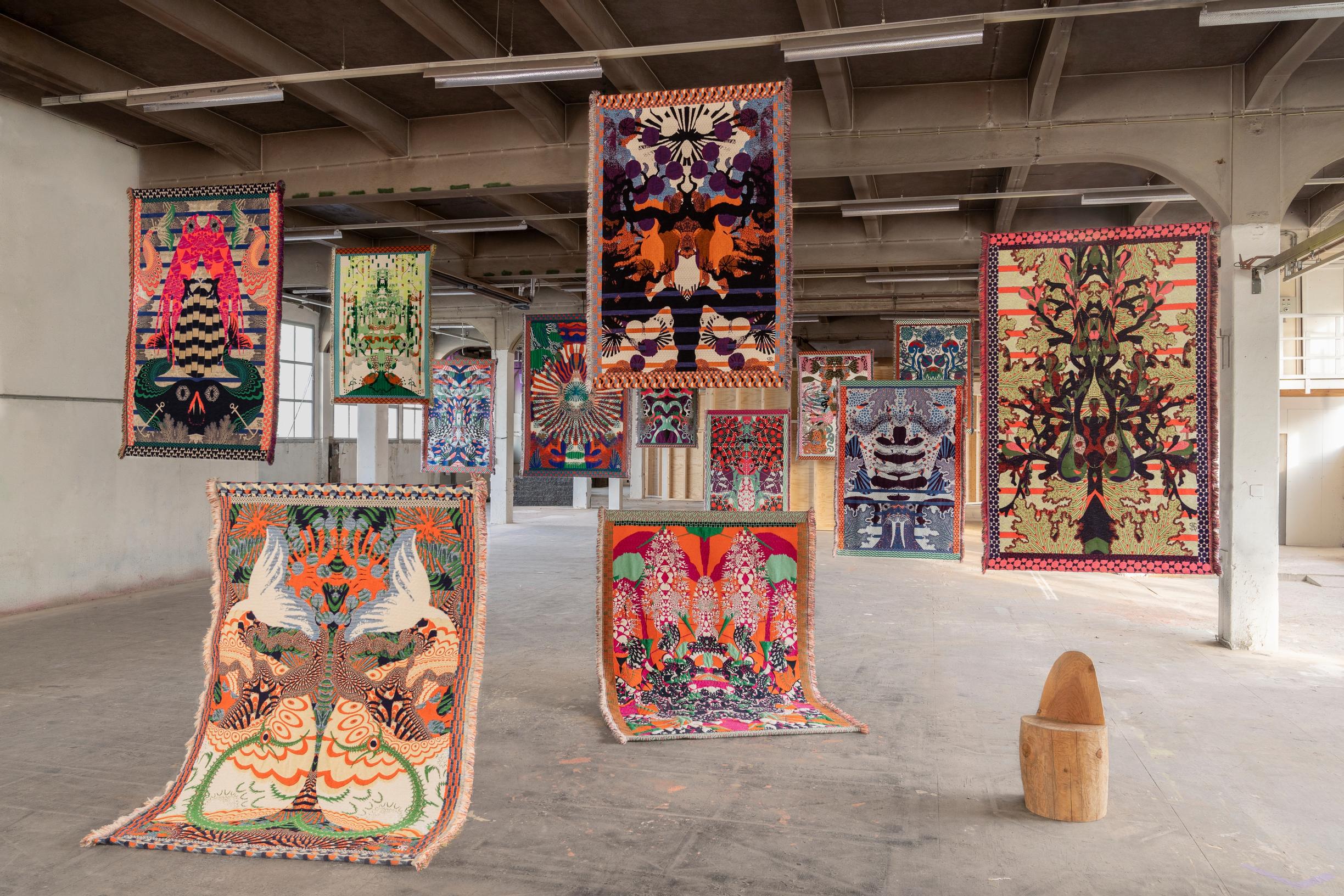
A young child in awe
As a child, Kustaa Saksi was good at drawing and attended art lessons. Art felt like a natural career, but when he went to study graphic design at the Lahti Institute of Design, he wasn’t entirely sure what it entailed. Posters and book covers did appeal to him, though.
During an internship, Saksi met the graphic designer Jouko Ollikainen, who worked on corporate graphics and logos as well as his own art. That was how the spark was lit.
“He managed to present that world in a captivating way. I learned so much from him about the magic of graphic design.”
When Saksi started at the school, they had just acquired new Macs and switched to digital design. After graduating, he first worked as the art director of Image magazine. Then came the first big turning point in his career.
“I dared to dive into illustration and take a leap into the unknown, shaping my own visual world.”
Saksi had created an illustration series for a Swedish magazine when a Dutch agency reached out. Through them, his client list has included Nike, Salvatore Ferragamo, Hermès, and Issey Miyake.
“Those names were quite dazzling to me back then.” Saksi says with a smile.
This was also a time when the internet started to make design work international. Saksi noticed he began getting illustration commissions from England and the United States. Global exposure boosted his confidence and showed him he could succeed.
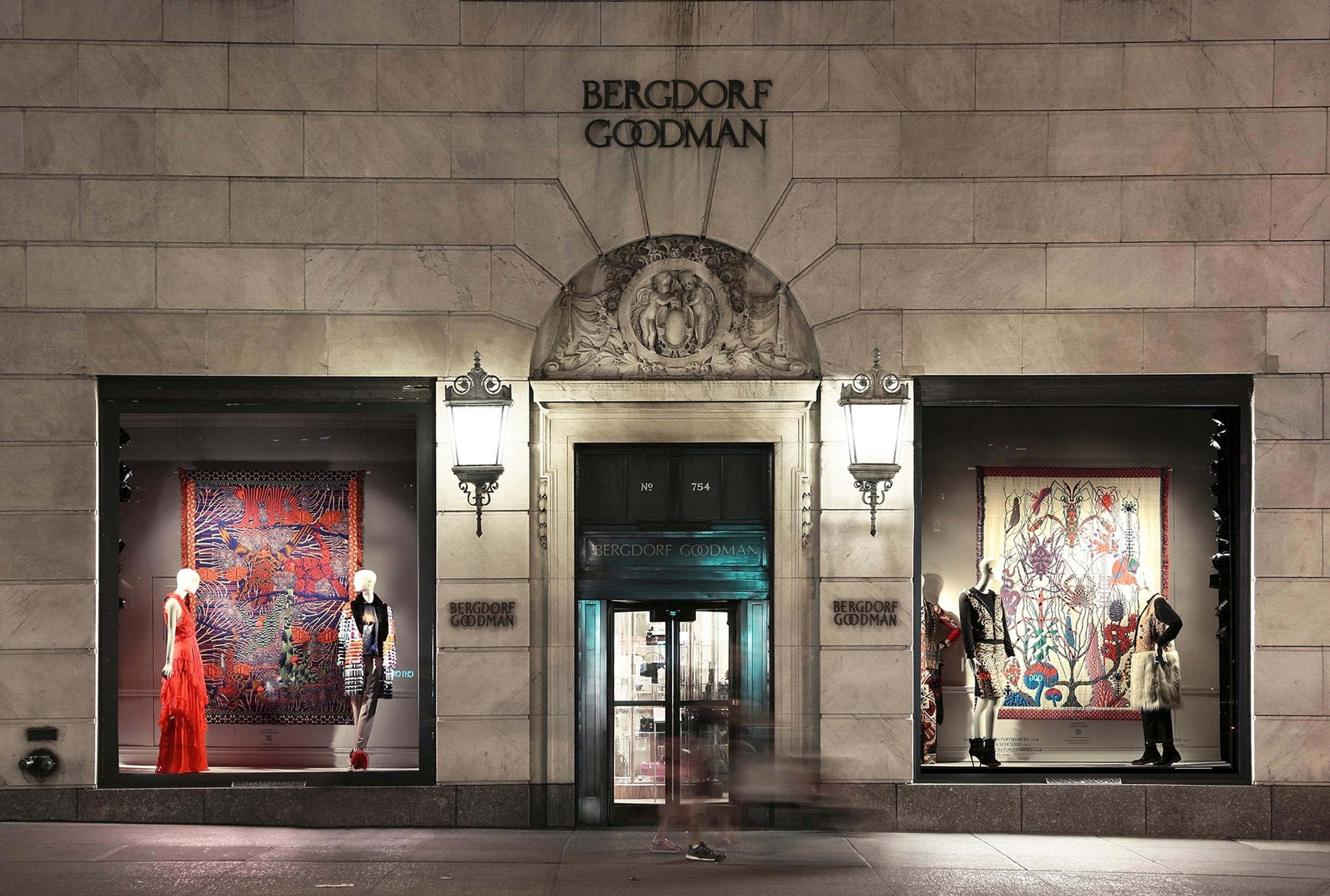
People recognize what’s unique
Ever since he was young, Kustaa Saksi had dreamed of moving abroad, and at 28 he went to Paris without a clear plan or French skills. He still ended up getting French clients.
“My style clicked with a few fashion houses, and from time to time I got commissions from prestigious clients.”
His collaboration with Hermès has continued to the present. Saksi has designed window installations for places like Seoul and Hong Kong, and he’s currently working on the main Amsterdam store.
Saksi says Instagram has taken over from agencies for presenting portfolios. The internet has democratized the market, allowing anyone to share their work instantly. But competition is intense, and there are many creators out there, so it’s hard to stand out.
He also knows not everyone catches their break. He believes his greatest asset has been originality.
“It’s reassuring that people recognize something fresh and original. You have to believe in it, even if it doesn’t happen immediately.”
In other words, you need persistence and consistency, and Saksi has certainly shown both. For balance, he lets himself drift and gather visual inspiration.
“Failure may lead to something new. That’s why we shouldn’t fear it.”
Today, Saksi primarily makes art. Occasionally, he accepts commissions for public spaces and private homes.
He works with both natural and synthetic materials, sometimes combining luxurious mohair with raw rubber, metal, or phosphorescent thread. His color combinations usually come together easily. He draws both by hand and digitally, then brings his plans to the textile lab in Tilburg, where they’re programmed into a language the machines can read. Sometimes it takes a day, sometimes six months. And sometimes, it fails.
“But failure can lead to something new, so there’s no need to be afraid of it.”
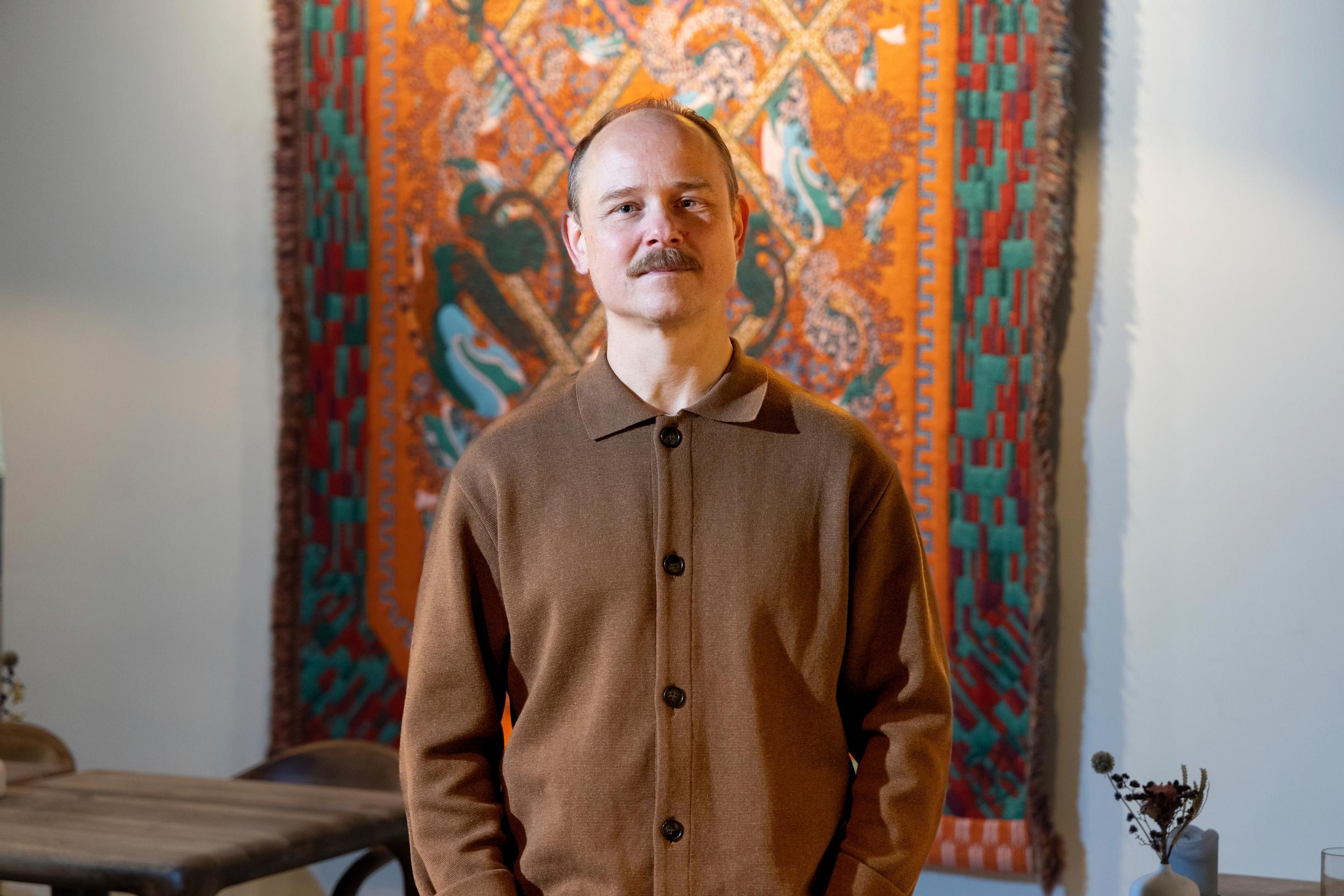
Migraines generate beauty
Kustaa Saksi’s art has been called psychedelic. He uses bold color combinations and both organic and geometric patterns. Still, he says he starts with natural forms, and is fascinated by microscopic details.
“Nature’s mathematics and fractal forms come into focus when you zoom in. My works are my own interpretation of nature.”
“Even though it hurts, I thought it would be incredible to try and see all the beauty my migraines bring.”
One source of inspiration for Saksi’s art are migraines, which he first noticed at age seven. He had borrowed a comic from a friend when suddenly half its panels disappeared, his head rattled, and he started seeing zigzags.
Saksi’s migraines have always been visual. He often sees swirling patterns, zigzags, and checkerboards. The headache comes only after the “show” ends.
“I thought it would be wonderful, in spite of the pain, to try to see all the beauty my migraines produce. The world of visions has become part of me,” he says.
He depicted the stages of his migraines in his textile series First Symptoms (2019). At the exhibition, some viewers felt they related to everything, while others said they didn’t see any of it.
“Everyone’s migraine is different, but there are odd details that stand out.”
Saksi has also studied hypnopompic dreams—hallucinations that can occur between sleep and waking. In those moments, you can experience intense visual impressions, which often disappear with light. He was inspired by a close relative’s experiences.
“I’m drawn to those in-between states when the brain is playing tricks, and I’ve portrayed them in many of my textile series.”
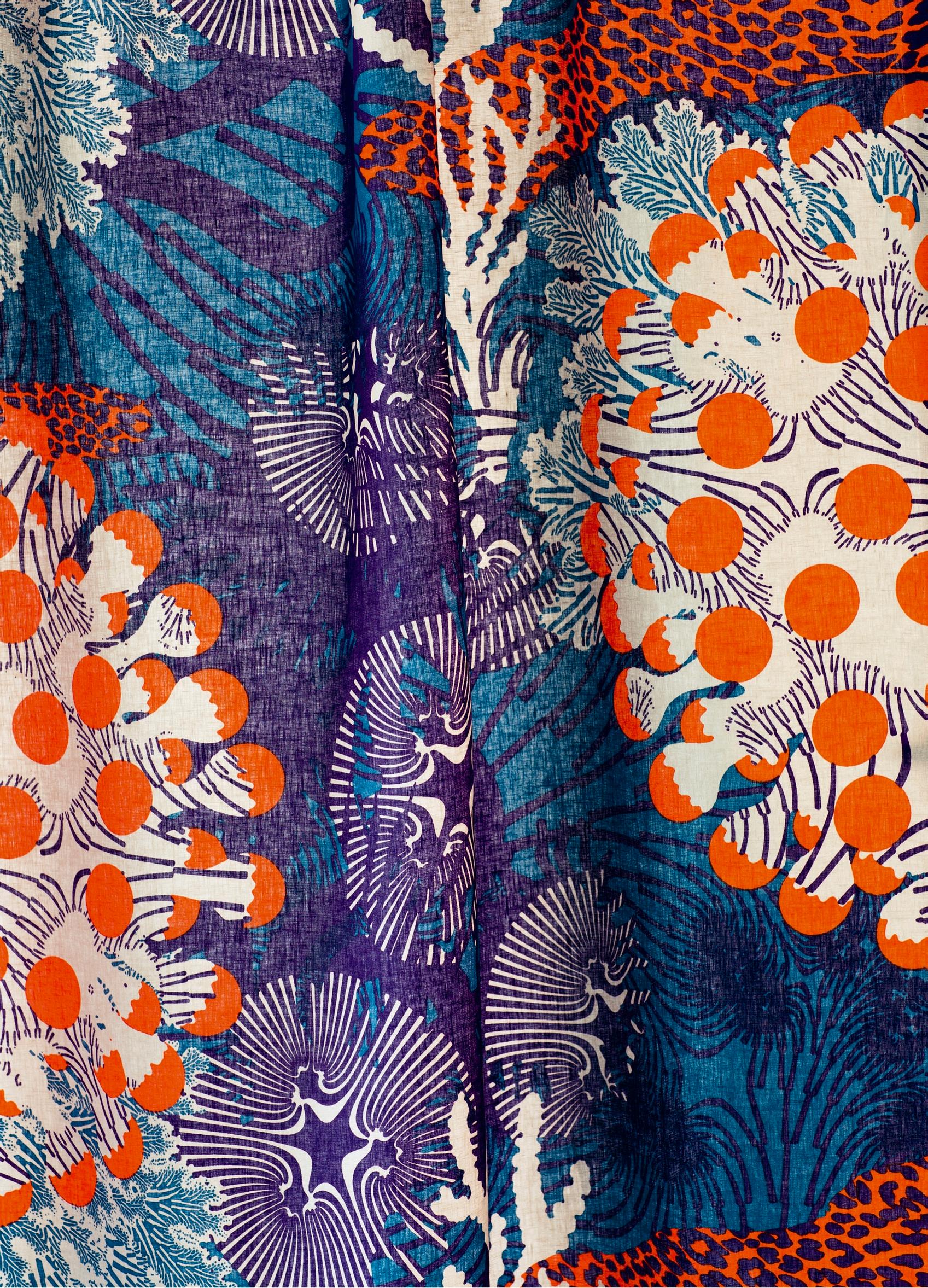
Living in the Netherlands is easy
In 2007, Kustaa Saksi decided to leave Paris. He had other ideas, but ended up packing a van and moving to Amsterdam, where he has lived ever since. He finds it easy to live there, and thinks the atmosphere is still quite open-minded.
“There, everyone is free to live their own life and be themselves.”
Plus, you can bike everywhere. The whole family’s daily life fits in a ten-minute ride: Kustaa and his partner, cancer researcher Suvi Savola, and their seven-year-old son Taito have what they need close by.
Taito has taught his father better time management—no more working late into the night.
“Kids keep you grounded. It’s not about you anymore—your focus shifts to a small person’s well-being. That ends up being much more important.”
Who: Artist and designer Kustaa Saksi (born 1975). Has lived in Amsterdam since 2007. His family includes his spouse, cancer researcher Suvi Savola and their seven-year-old son Taito.
Education: Graduated as a graphic designer from the Lahti Institute of Design in 2000.
Career Started out as a graphic designer. Then worked as an illustrator and pattern designer. His clients include Issey Miyake, Hermès, Nike, Lacoste, and Marimekko. Since 2011, he has focused on textile art.


